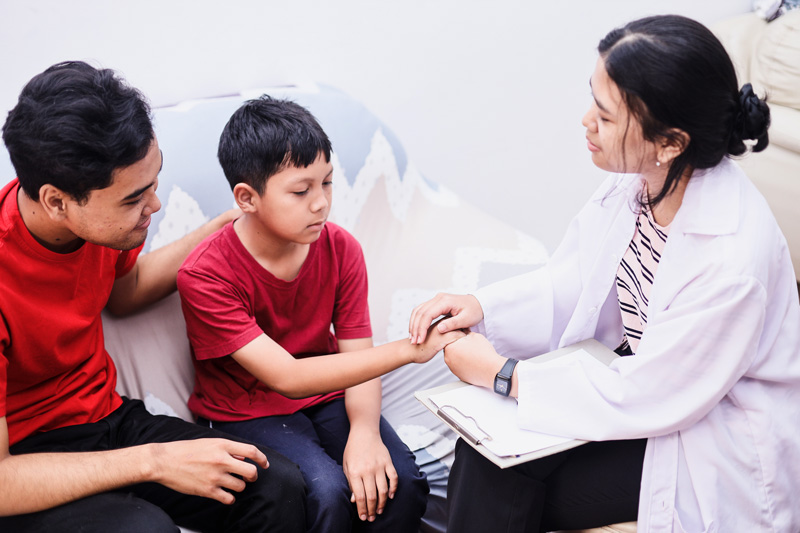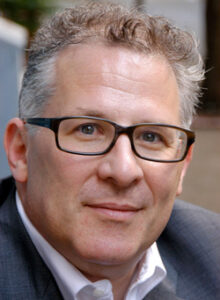Human beings may seem similar because we all go through common developmental stages. However, in reality, human beings are remarkably diverse. Shaped by genetics and life experiences, we develop a wide range of personalities, temperaments, skills, capabilities, preferences, perspectives, and ways of being.

This means we are all neurodiverse in one way or another.
The foundation of human development rests on a person’s capacity to interact with their environment. The ability to sense, receive, and respond to information and experiences drives the development of new abilities, functional skills, and patterns of behavior. The scope and sequence of development are parallel to brain development and function. This combination of ‘nature and nurture’ results in how we individually express capabilities such as expression and receptive communication, social interaction and relationships, and control over behavior.
Some specific patterns of expression in those domains are associated with the diagnostic criteria for the form of neurodiversity we call “autism.” However, being autistic is not necessarily a disability, nor is it always disabling. The diagnostic criterion for autism focuses on autism-related disabilities that can interfere with a child’s natural developmental progress; for some children, those disabilities may be profound.
Therapeutic interventions have the potential to reduce the burden of autism-related disabilities and support the autistic child’s capacity to fully develop individual capabilities, preferences, perspectives, and ways of being.
But we now know that an autistic child is far more than their diagnosis-related symptoms and behaviors. Autism is a “whole person” biopsychosocial condition. There are common positive attributes of the autistic mind, such as creativity, attention to detail, a strong sense of right and wrong, memory, honesty, and deep focus. There are also shared patterns of autism-associated physical and mental health-related conditions.
Autistic children and adults have a significantly higher prevalence of other health conditions, such as asthma, allergies, epilepsy, gastrointestinal conditions, and mental health, compared to non-autistic controls (Carbone et al., 2015). Almost 50% of children with autism are on at least one chronic medication for co-morbidities, and 30% have polypharmacy of three or more medications (Feroe et al., 2021).
Children with autism have more annual physician visits, more emergency room visits, and are more likely to be hospitalized (Cummings et al., 2015). Mean medical expenditures for children with autism and co-occurring conditions were four to six times higher than those of comparison groups (Shimabukuro et al., 2007).
With this truth, navigating the health systems can be a challenge for autistic children and adults and those who care for and about them. Health care delivery is overshadowed by their “autistic symptoms and behavior.”
But, as the World Health Organization states, whole person health is more than just the absence of disease or infirmity, but a “state of complete physical, mental and social well-being” (Constitution, 2024).
How Can We Help Our Systems of Care Approach Autism From a “Whole Person” Orientation?
First, by orienting them to the fact that body functions serve their capacity for activities, participation, and management of their environment. Care planning should specifically focus on the value of physical health in an autistic’s capacity to be an active member of the family and community, which are as follows:
Body Functions:
- Mental functions
- Sensory functions
- Voice and speech functions
- Functions of the major organ systems (heart, lungs, digestive, immune, metabolic)
- Reproductive functions and sexual health
- Neuromusculoskeletal and movement-related functions
- Functions of the skin and related structures
Activities and Participation:
- Learning and applying knowledge
- General tasks and demands
- Mobility
- Self-care
- Domestic life
- Interpersonal interactions and relationships
- Education and employment
- Community, social, and civic life
Environment:
- Products and technology
- Natural environment and human-made changes to the environment
- Support and relationships
- Attitudes
- Services, systems, and policies
Everyone has a “health-resource community,” which are those individuals, organizations, entities, and environments (including the patient and their family) that have any involvement or influence – actual, virtual, or potential – on the variables that influence their health and well-being. For autistic children and adults, this community often has significant and overlapping health care requirements among the medical, behavioral, social, educational, home, and community service sectors. When these services are not integrated, it can result in fragmentation and inefficiencies known to reduce the possibility of optimal life-course outcomes.
Integrated care means that all members of someone’s health resource community are oriented toward the “whole person.” This involves looking beyond disabilities, disruptive behaviors, or challenges with activities of daily living to identify individualized opportunities for growth and achievement across a wide range of person-centered developmental and behavioral domains.
Until our health care systems recognize the need for a model of “autism-tailored care,” it will fall on patients themselves, their family members, caregivers, or advocates to ensure the system meets their needs for body functions, capacity for activity and participation, and managing their environment.
Routine Visits
For routine visits, talk about the appointment beforehand and tell your loved one what to expect. You could show a calendar or use a social story. Before the appointment, prepare for – and practice – some of the things that are going to happen, such as:
- Sitting in the waiting room
- Laying down
- Removing clothing/being touched
- Following instructions (“deep breath;” “open your mouth”)
Ask the office if you can make a brief visit in advance so the environment (spaces, sounds, lighting, people) is familiar. Let the office know the patient has autism, and if the autistic person has common expected behaviors, let the health care staff know what to expect. If there are sensory issues, use the tools (headphones, sunglasses, etc.) that are familiar and comfortable. Ask for the first appointment of the day to reduce the wait time.
Make sure a family member, caregiver, or advocate who is familiar with the autistic person is present and bring rewards or distractions. If you have a behavior therapist, consult them for support or recommendations to ensure a successful visit.
Emergency Room
Emergency medical care can be especially stressful for autistics and those who care for them. Emergency rooms are often unprepared to accommodate autistic patients, resulting in misconceptions and problem behavior. While this can’t always be prevented, there are some things to consider when an ER visit is necessary.
The first is an “advance visit.” Pick the hospital in your area where you would go in case of an emergency and call the hospital advocate and arrange a “no-problem” tour early in the morning. This will increase familiarity and comfort if the services are ever necessary. Keep an updated list of conditions and medications so you are prepared should you need to go.
When there is a need for a visit, call the ER in advance if possible. If not, immediately let the health care staff know the patient is autistic. Inform them how the person communicates and manage staff expectations in terms of experience and behavior. Offer your assistance to help make the visit successful, like calming strategies. You may need to advocate for changes in the usual protocols. Many people are often involved in an ER visit (medical assistants, nurses, doctors), so you will need to explain this many times to each person. Anticipate triggers for problem behavior, and bring some comfort items (toys, snacks, stuffies, etc.).
An Annual Health Check
Sometimes, this is called a “well-child visit” or an “annual wellness visit.” What it is NOT is an “annual physical.” In fact, the physical exam should be just one part of it. The goal of the health check is to create a personalized preventive care plan and set some annual goals for sustaining or improving the quality of health.
An annual health check should include a review of all the conditions and health statuses (including a list of all the specialists, therapists, and others involved in someone’s care). It will also involve screening tests and assessments to determine new or emerging health-related risks. These may be related to developmental status, mental or behavioral health, sleep, nutrition, and other important areas of function.
Each health-related condition – like asthma, seizures, skin conditions, or gastrointestinal problems – should get special attention and an “action plan” for prevention or what to do if things go wrong.
The preventive care plan should also map out the activities that need to occur during the year, like annual flu shots and other immunizations, as well as hearing, vision, or blood tests.
Visits for health-related problems that arise over the year are also a good time to revisit the status of the preventive care plan.
Care Coordination
The healthcare system does not have a formal model for collaboration. Most of the time, each discipline – medicine, nursing, pharmacy, psychology – presumes authority and creates their own health care plan. However, autistic patients require more coordination regarding the decisions being made (this reduces the burden on the family and the risk of conflicts and duplications) and “team-based care” where everyone involved can support the goals.
A great example is the opportunity for behavior therapies to support health-related goals such as blood draws, dental care, or physical examinations. Other health-related behaviors, such as taking medication, can be supported as part of behavior treatment plans.
Unfortunately, the burden is often on families to serve as “care coordinators” to keep track of the decisions and orders from each provider. Here are some things that can help:
- Ask for a written copy of the goals and tasks from each provider. This is not a copy of the medical record (that’s not bad to have) but a summary of conditions, the goal for those conditions, and the activities required to meet the goal. Ask for clarification if the “discharge plan” or visit summary is unclear.
- Make your own “master list” of all the members of the health-resource community, their areas of interest or specialties, and the goals they have set. Then, keep track of the expected activities. If some seem to overlap or repeat, or you have a different sense of what should be prioritized, discuss this with the primary care provider. You can make appointments to see the primary care provider even when you don’t have a problem; just tell them you want to make an appointment for a consultation or preventive care visit.
Finally, most people face healthcare events with doubt and confusion. We often find ourselves stranded without credible social constructs for healthcare and confronted by increasingly complex systems – often created by those without values that prioritize patients – with no clear sense of who controls our care. Some organizations are working towards a model of autism-tailored care, but until then, understanding how these systems work will allow you to be the best advocate for yourself or your loved ones.
Steven Merahn, MD, is Medical Director at Partners Health Plan / Care Design NY.
References
Carbone, P. S., Young, P. C., Stoddard, G. J., Wilkes, J., & Trasande, L. (2015). A comparison of ambulatory care sensitive hospitalizations among children with and without autism spectrum disorder. Academic Pediatrics, 15(6), 626–635. https://doi.org/10.1016/j.acap.2015.07.006
Constitution. (2024, March 8). https://www.who.int/about/accountability/governance/constitution
Cummings, J. R., Lynch, F. L., Rust, K., Coleman, K. J., Madden, J. M., Owen-Smith, A., Yau, V., Qian, Y., Pearson, K. A., Crawford, P., Massolo, M. L., Quinn, V. P., & Croen, L. (2015). Health services utilization among children with and without autism spectrum disorders. Journal of Autism and Developmental Disorders, 46(3), 910–920. https://doi.org/10.1007/s10803-015-2634-z
Feroe, A. G., Uppal, N., Gutiérrez-Sacristán, A., Mousavi, S., Greenspun, P., Surati, R., Kohane, I. S., & Avillach, P. (2021). Medication use in the management of comorbidities among individuals with autism spectrum disorder from a large nationwide insurance database. JAMA Pediatrics, 175(9), 957. https://doi.org/10.1001/jamapediatrics.2021.1329
Shimabukuro, T. T., Grosse, S. D., & Rice, C. E. (2007). Medical Expenditures for Children with an Autism Spectrum Disorder in a Privately Insured Population. Journal of Autism and Developmental Disorders, 38(3), 546–552. https://doi.org/10.1007/s10803-007-0424-y





